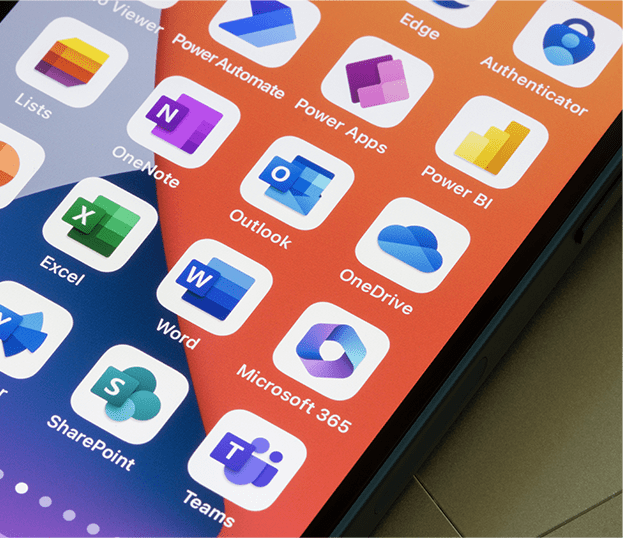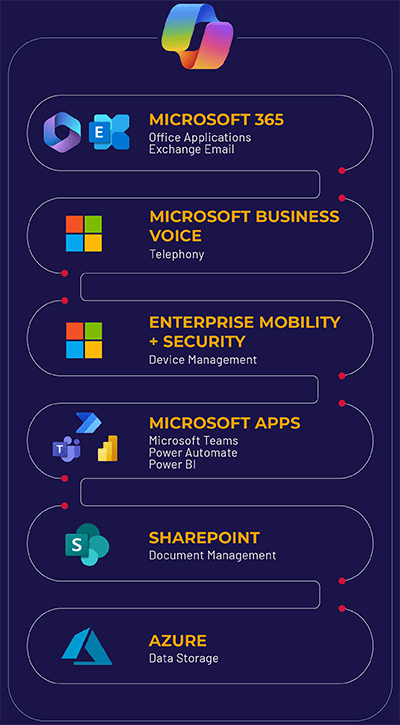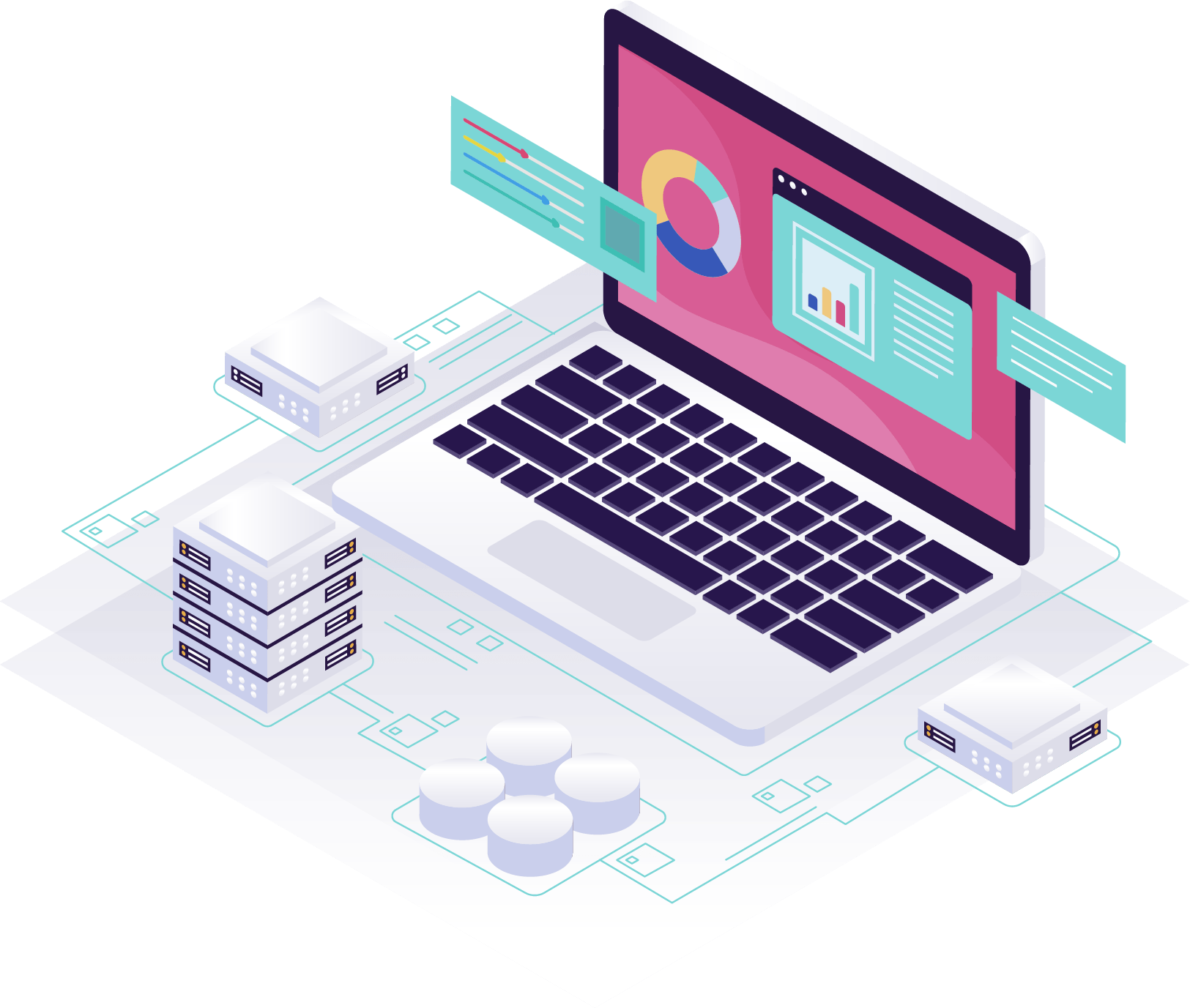
Microsoft Modern Workplace Explained

Tom Johnson
8 minutes
Last updated: 12/5/24
Contents
What is a Modern Workplace?
Microsoft’s Modern Workplace is more than just a suite of tools; it’s a transformative approach to IT infrastructure that streamlines various workplace tasks through application adoption and empowers employees with online collaboration capabilities.
These collaboration tools, also known as productivity tools, are designed to improve employee productivity and foster a flexible and scalable work environment. By adopting a Modern Workplace approach, organisations can improve:
- Security
- Productivity
- Collaboration
- Employee Experience


How Does a Modern Workplace Work?
This suite of tools facilitates digital transformation by making all business tools accessible in the cloud. It supports efficient and secure remote work, by utilising Microsoft productivity tools including:
- Office 365
- Exchange
- Enterprise Mobility + Security
- Microsoft Teams
- Power Automate
- Power BI
- SharePoint
- Azure
It’s About Driving Business Performance
By utilising the latest Microsoft tools, and maintaining them to Microsoft Best Practice baselines, businesses can ensure their IT systems support employees to do their best work, securely, from anywhere.
The range of productivity tools helps employees collaborate effectively. Furthermore, by preventing configuration drift users benefit from a consistent experience removing the frustrations caused by IT issues.
A Modern Workplace can be managed in-house, or alternatively outsourced to a Managed Service Provider such as Aspire. When outsourced as part of a Managed IT Support service, a provider can manage everything from onboarding to device provisioning.
By fully adopting a Modern Workplace, we’ve seen organisations decrease tickets raised by 78.7% and user experience improve dramatically.

Dicover the power of a Modern Workplace approach
with Aspire's RealCare Complete Managed IT Support
Challenges a Microsoft Modern Workplace Solves
The purpose of a Modern Workplace is to tackle some of the biggest challenges posed by modern business IT infrastructure.
By embracing systems that prevent issues from occurring, organisations are seeing greatly improved user experience and a reducing in the amount of time, effort and resources being spent on issue handling.

Poor Employee IT Experience
Poor hardware, software and application issues can all contribute to a negative employee experience.
Recent research suggests that poor workplace technology is a major driving factor when employees choose to seek alternative employment.
Growing Security Risks
At Aspire, our consultants implement security and identity configuration baselines for your M365 tenant, aligning with Microsoft Best Practices to ensure compliance.
Your tenancy can then be proactively monitored for configuration drift away from these standards.
IT Impacting Productivity
According to a recent survey, insufficient workplace technology causes employees up to 80+ wasted hours per year.
By empowering employees with the latest productivity tools and a consistent experience, productivity can be dramatically improved.
Difficulty Achieving Compliance
Due to the standardised nature of adopting a Modern Workplace, achieving Cyber Essentials certification and other compliance standards can be more easily achievable than with legacy infrastructure.
What Are the Main Benefits of a Microsoft Modern Workplace?

Scalable
A Modern Workplace incorporates cloud-based services which offer elastic resources that can be easily scaled up or down based on demand. By leveraging scalable infrastructure and services, organisations can efficiently adapt to changing business needs.

Better User-Experience
Microsoft tools are designed with user-centric principles, ensuring a seamless and intuitive experience across devices and platforms.

Increased Productivity
Increased productivity is enabled by Microsoft's suite of productivity tools, which leverage artificial intelligence and automation to streamline tasks and optimise workflows.
Consistent Performance
Microsoft applications can be maintained to Microsoft Best Practice baselines to prevent configuration drift and ensure a consistent user experience.
Supports a Flexible Workforce
Flexible working styles are supported by via Microsoft's cloud-based collaboration tools and remote work solutions, such as Teams and Azure Virtual Desktop. These tools enable employees to securely access their work environment and collaborate with colleagues from anywhere, on any device.

Hardened Security
A correctly configured Modern Workplace encompasses identity and access management, threat protection, information protection, and compliance. Built-in security features such as multi-factor authentication, encryption, and advanced threat detection help organisations safeguard their data and assets.
Facilitates Compliance
Microsoft's cloud services offer built-in compliance controls, certifications, and industry-specific standards to help organisations meet regulatory requirements and industry standards.
Adopting a Modern Workplace Approach
Transitioning to a Microsoft Modern Workplace involves embracing tools that elevate efficiency and secure corporate data, but what does the adoption journey entail?
Adopting new systems and practices is often met with resistance from employees. This resistance can significantly hinder the transition to the Microsoft Modern Workplace. Often, this resistance stems from employees not understanding why there is a need to change their existing working behavior. There’s also a common misbelief among staff that being more productive implies being under more pressure, which can hinder the adoption of new practices like Microsoft 365.
Streamlining Transition with Change Management
Transitioning to the Microsoft Modern Workplace involves a transformative change across various aspects of an organisation. This includes shifts in infrastructure, hierarchical structures, and privacy policies, all of which aim to harness the full potential of Microsoft 365.
However, effective change management is not just about distributing licenses but also managing the human aspect. It’s about preparing employees for new changes and boosting organisational competency, ensuring that everyone is on board and capable of using these new tools to their maximum potential.
Implementation of a structured change management plan for Microsoft 365 adoption is crucial. This plan should include:
- A clear timeline
- Proactive support
- Ongoing training programs
Pilot groups to address potential issues before full deployment
Microsoft Teams, in particular, enhances change management by facilitating communication, understanding the adoption timetable, and helping to adapt to new ways of working.
Strategies for Effective Change Management
To manage changes effectively, it’s important to establish a shared vision and common understanding. This approach maximises the use of Microsoft 365 throughout an organisation and minimises confusion. A structured change management approach for Microsoft 365 includes phases of scope definition, onboarding, and gathering continuous feedback. Concentrating on employee training and addressing their concerns helps to smooth the transition to Microsoft 365.
Effective communication and the use of specific metrics are crucial to monitor the success and make necessary adjustments during the Microsoft 365 adoption process. Involving IT department representatives and treating adoption as a continuous service highlights the focus on improving digital excellence in a proactive manner. The key steps to ensure a successful adoption process are:
- Establish pilot groups for initial deployment
- Appoint ‘champions’ to guide and give feedback
- Monitor adoption metrics and adjust strategies accordingly
- Provide ongoing training and support to employees
- Continuously communicate the benefits and value of Microsoft 365 to the workforce
By following these steps, organisations can effectively prepare their workforce for new systems and ensure a smooth transition to Microsoft 365.
Overcoming Common Adoption Challenges
Adopting new systems and practices is often met with resistance from employees. This resistance can significantly hinder the transition to the Microsoft Modern Workplace. Often, this resistance stems from employees not understanding why there is a need to change their existing working behavior. There’s also a common misbelief among staff that being more productive implies being under more pressure, which can hinder the adoption of new practices like Microsoft 365.
Confusion is the biggest threat to organisations undergoing change, and addressing this directly is vital for a successful transition. By providing clear explanations and addressing misconceptions, organisations can overcome these challenges and foster a smoother transition to the Microsoft Modern Workplace.
Summary
The adoption of Microsoft Modern Workplace brings significant benefits, including improved collaboration, productivity, and user satisfaction.
By leveraging the right tools, focusing on continuous learning, and maintaining a strong security and compliance strategy, organisations can successfully transition to this modern work model, fostering an inclusive, agile, and productive work environment.
During the adoption phase, it’s crucial for pilot groups and champions to communicate the process including the benefits, key transitional dates, and means of contact to raise any concerns. This communication helps the entire organisation navigate the transition smoothly and efficiently, ensuring everyone is on the same page about the benefits and functionalities.

Explore Aspire’s market-leading Managed IT Support
Delivered by our technically capable and friendly support staff, RealCare is available in different packages to cover on-premise systems, cloud infrastructure, users and voice.

Microsoft Modern Workplace FAQ's
-
What are the key components of a modern workplace?
The key components of a modern workplace include the Microsoft 365 suite and its AI capabilities. These tools are essential for productivity and collaboration in a modern work environment.
-
What Applications does Microsoft Modern Workplace Include?
Microsoft Modern Work covers a range of tools, including Office, Word, Excel, PowerPoint, OneNote, Access, Exchange Online, OneDrive, SharePoint, and Microsoft Teams for various work-related tasks.
-
How does Microsoft Teams enhance collaboration?
Microsoft Teams enhances collaboration by serving as a central hub for communication and productivity, allowing for efficient communication and customisation of workspaces.
-
How does Microsoft Intune manage device security?
Microsoft Intune manages device security by isolating organisational data, enforcing security protocols, and automating compliance and conditional access policies. Using these features helps ensure the security of managed devices.
-
How can change be managed effectively when transitioning to the Microsoft Modern Workplace?
To manage change effectively when transitioning to the Microsoft Modern Workplace, establish a shared vision, prioritise employee training, and include IT department representatives in the process. This will help ensure a smooth and successful transition.
To overcome common adoption challenges, focus on providing clear explanations, addressing misconceptions, and fostering a smooth transition. This will help in encouraging acceptance and integration of new practices.